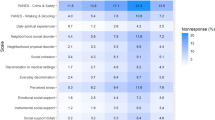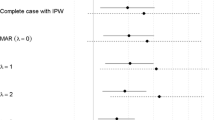Abstract
When the Black Women’s Health Study, a prospective cohort of over 59,000 women who have been followed since 1995, invited all of its participants to provide a DNA sample for future research, only 51 % of those participants agreed to do so. Responders were significantly older and more health conscious than non-responders. The Black Women’s Health Study is a unique resource, but this low level of response and its resulting self-selection bias are now the norm in contemporary epidemiologic, and especially cohort, studies. Epidemiology desperately needs new approaches that work better and cost less. The literature on predictors of response focuses too narrowly on participant characteristics and does not identify any clear steps studies can take to increase participation. To improve research quality, cost-efficiency, and long-term sustainability of studies, epidemiology can and should approach, analyze, and leverage response-rate data more creatively and extensively than most studies have done to date.
Similar content being viewed by others
References
Black Women’s Health Study. http://www.bu.edu/bwhs/. Accessed 17 Mar 2016
Galea S, Tracy M (2007) Participation rates in epidemiologic studies. Ann Epidemiol 17(9):643–653. doi:10.1016/j.annepidem.2007.03.013
Morton LM, Cahill J, Hartge P (2006) Reporting participation in epidemiologic studies: a survey of practice. Am J Epidemiol 163(3):197–203. doi:10.1093/aje/kwj036
Campbell PT, Deka A, Briggs P, Cicek M, Farris AB, Gaudet MM, Jacobs EJ, Newton CC, Patel AV, Teras LR, Thibodeau SN, Tillmans L, Gapstur SM (2014) Establishment of the cancer prevention study II nutrition cohort colorectal tissue repository. Cancer Epidemiol Biomark Prev 23(12):2694–2702. doi:10.1158/1055-9965.EPI-14-0541
Sinicrope PS, Patten CA, Bonnema SM, Almquist JR, Smith CM, Beebe TJ, Jacobsen SJ, Vachon CM (2009) Healthy women’s motivators and barriers to participation in a breast cancer cohort study: a qualitative study. Ann Epidemiol 19(7):484–493. doi:10.1016/j.annepidem.2009.01.002
De Vries R, Tomlinson T, Kim H, Krenz C, Ryan K, Lehpamer N, Kim S (2016) The moral concerns of biobank donors: the effect of non-welfare interests on willingness to donate. Life Sci Soc Policy 12(3):1–15. doi:10.1186/s40504-016-0036-4
Fry CL (2008) A comprehensive evidence-based approach is needed for promoting participation in health research: a commentary on Williams. Soc Sci Med 66(7):1457–1460. Discussion 1461–2. doi:10.1016/j.socscimed.2007.12.014
Williams B, Entwistle V, Haddow G, Wells M (2008) Promoting research participation: why not advertise altruism? Soc Sci Med 66(7):1451–1456. doi:10.1016/j.socscimed.2007.12.013
Silva Junior SH, Santos SM, Coeli CM, Carvalho MS (2015) Assessment of participation bias in cohort studies: systematic review and meta-regression analysis. Cad Saude Publica 31(11):2259–2274. doi:10.1590/0102-311X00133814
Bunin GR, Spector LG, Olshan AF, Robison LL, Roesler M, Grufferman S, Shu XO, Ross JA (2007) Secular trends in response rates for controls selected by random digit dialing in childhood cancer studies: a report from the Children’s Oncology Group. Am J Epidemiol 166(1):109–116. doi:10.1093/aje/kwm050
Bernstein L, Allen M, Anton-Culver H, Deapen D, Horn-Ross PL, Peel D, Pinder R, Reynolds P, Sullivan-Halley J, West D, Wright W, Ziogas A, Ross RK (2002) High breast cancer incidence rates among California teachers: results from the California Teachers Study (United States). Cancer Causes Control 13(7):625–635
Acknowledgments
This commentary was supported by the NIH/NCI and NIH/NIEHS (Grant UM1-CA164917) and the NIH/NCI (Grant U01-CA199277).
Author information
Authors and Affiliations
Corresponding author
Ethics declarations
Conflict of interest
The authors declare that they have no conflict of interest.
Rights and permissions
About this article
Cite this article
Lacey, J.V., Savage, K.E. 50 % Response rates: half-empty, or half-full?. Cancer Causes Control 27, 805–808 (2016). https://doi.org/10.1007/s10552-016-0748-z
Received:
Accepted:
Published:
Issue Date:
DOI: https://doi.org/10.1007/s10552-016-0748-z




